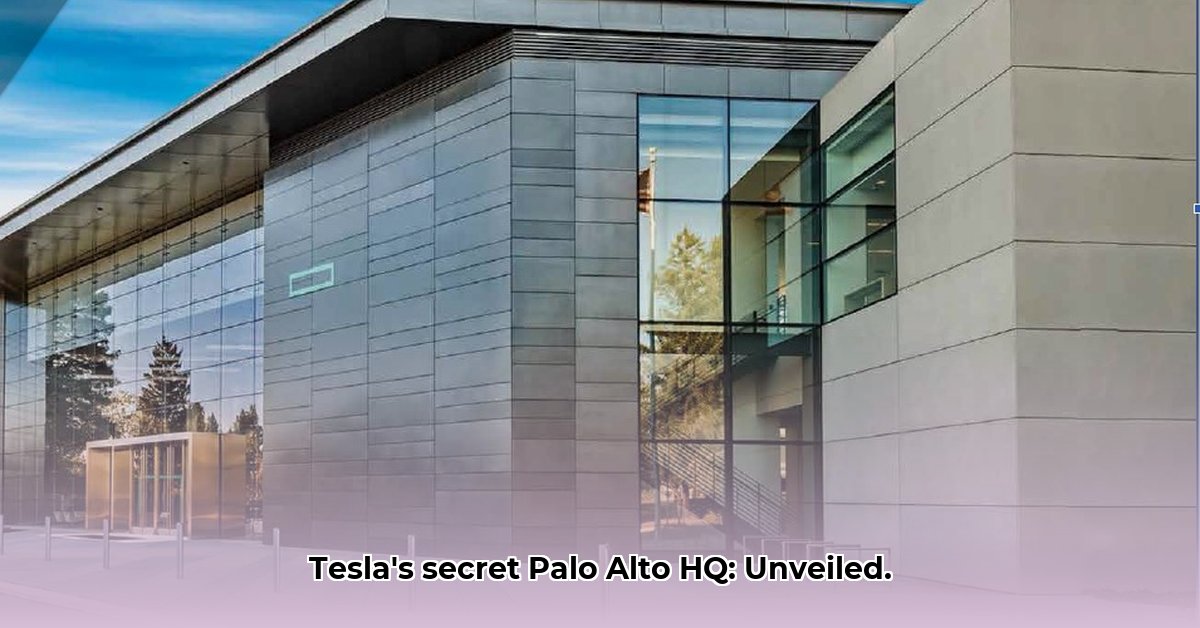
3000 Hanover Palo Alto CA: Tesla's Strategic Relocation and its Implications
Tesla's recent relocation of its engineering and artificial intelligence (AI) headquarters to 3000 Hanover Street in Palo Alto, California, marks a significant strategic shift. This move, following the company's establishment of its main headquarters in Texas, underscores the enduring importance of Silicon Valley's unparalleled talent pool for Tesla's future innovation. The decision extends beyond a simple address change; it represents a calculated investment in securing access to top-tier engineering and AI experts. But what factors drove this choice, and what are the broader implications for Tesla, the region, and the tech industry? For more on Tesla's innovative projects, check out Tesla's latest news.
Why Palo Alto? Access to Talent and Innovation
The selection of 3000 Hanover, a building previously occupied by Hewlett-Packard Enterprise, offers Tesla more than just prime office space. Its proximity to Stanford University—a globally renowned research institution—provides unparalleled access to cutting-edge research and a robust pipeline of highly skilled engineering graduates. This strategic location acts as a powerful magnet, attracting leading minds in the tech world. Isn't this a clear demonstration of Tesla's commitment to securing the best talent available?
Beyond Bricks and Mortar: A Strategic Investment in Innovation
This relocation is not merely a physical move; it represents a substantial investment in Tesla's long-term growth. It signals a renewed commitment to the vibrant California tech ecosystem, a decision seemingly driven by the prioritization of talent acquisition over potential cost savings associated with the Texas location. This emphasizes the significant value Tesla places on access to the concentrated expertise found only in Silicon Valley.
Assessing the Impact: Opportunities and Challenges
Tesla's move to 3000 Hanover presents both significant opportunities and potential challenges. The influx of Tesla employees will undoubtedly increase pressure on Palo Alto's already strained housing market and infrastructure. The city government faces the crucial task of managing this growth to ensure a smooth transition and address potential strains on resources, ranging from transportation and public services to schools and community resources. How effectively the city manages this influx of new residents will be critical to the success of the move.
Key Stakeholders and Their Objectives
The relocation significantly impacts various stakeholders. Each group possesses unique short-term and long-term goals, accompanied by potential challenges.
| Stakeholder | Short-Term Goals | Long-Term Goals | Potential Problems |
|---|---|---|---|
| Tesla | Secure top engineering talent; establish operational efficiency at new HQ | Develop next-generation AI and electric vehicle technology; expand production | High housing costs; competition for talent; regulatory hurdles |
| Palo Alto City Government | Manage increased infrastructure demands; facilitate a smooth transition | Sustainable urban planning; equitable distribution of benefits | Increased housing costs; traffic congestion; strain on public services |
| California State Government | Attract and retain tech companies; boost the state's economy | Maintain California's leadership in technological innovation | Competition from other states; affordability issues |
| Local Businesses | Capitalize on increased demand from Tesla employees | Foster partnerships with Tesla; experience business growth | Increased costs; intensified competition |
| Palo Alto Residents | Improved infrastructure; minimal disruption to daily life | Preservation of quality of life; community benefits from Tesla's presence | Increased housing costs; additional traffic; potential strain on resources |
The Path Forward: Managing Growth and Ensuring Sustainability
Tesla's move to 3000 Hanover carries implications far beyond a simple corporate relocation. It represents a strategic decision that highlights Silicon Valley's continued prominence as a global hub for technological advancement. However, the long-term success of this move hinges on careful planning and collaboration among all stakeholders. Addressing the potential negative impacts on the local housing market and infrastructure will be crucial in ensuring a positive outcome for both Tesla and the Palo Alto community. The coming years will provide a compelling case study on the dynamic interplay between corporate expansion and its effects on a community. What proactive measures will be implemented to address these concerns efficiently?
- Three Pivotal Points:
- Tesla's relocation to Palo Alto prioritizes access to top engineering talent and research capabilities near Stanford University.
- The move represents a significant investment in California's tech ecosystem, despite previous relocation efforts to Texas.
- Managing the increased strain on Palo Alto's housing market and infrastructure is crucial for the long-term success of the relocation.